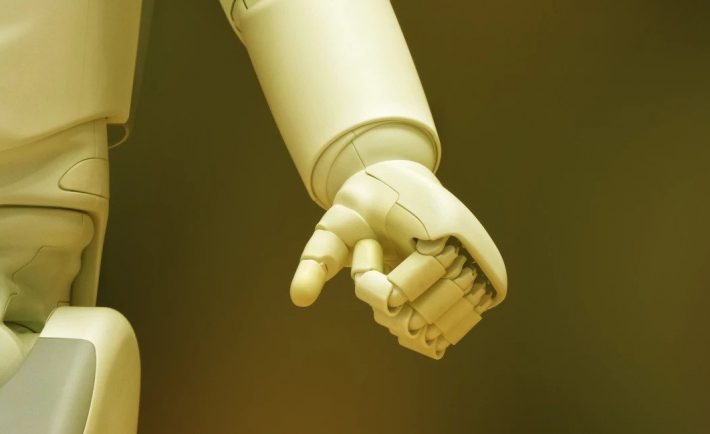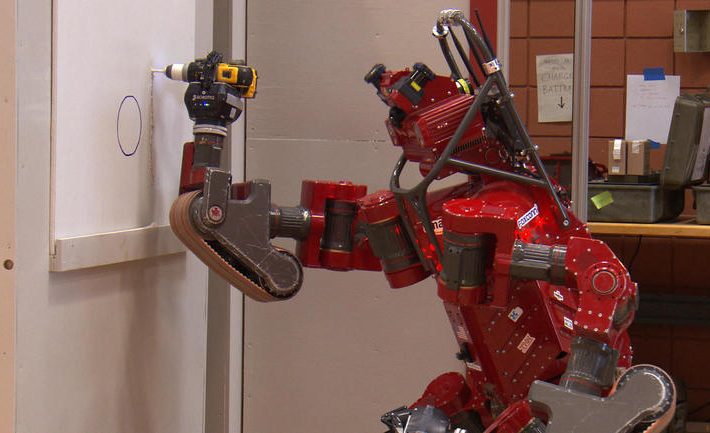Robots and AI are currently playing crucial roles in different sectors. Robots are able to do things that are too challenging or too dangerous for humans. They go deep under the ocean level and do critical brain surgeries with the help of highly qualified humans who know how to control them. They clear disaster sites and work in constructions instead of humans to keep them safe. AI or artificial intelligence, on the other hand, trains machines like computers and robots to act on their own based on their previous knowledge.
Robots and AI are going to change college education in a number of ways. Some of the most significant ways include:
- Personalized learning: Robots and AI can be used to personalize learning for each student. This means that students can learn at their own pace and in a way that is tailored to their individual needs.
- More efficient learning: Robots and AI can automate some of the tasks that are currently done by teachers, such as grading papers and providing feedback. This can free up teachers to spend more time with students and provide more individualized attention.
- More accessible learning: Robots and AI can make learning more accessible to students who are unable to attend traditional classes. This includes students who are homebound, have disabilities, or live in rural areas.
- More affordable learning: Robots and AI can help to make college more affordable. This is because they can automate some of the costs that are currently associated with college, such as the cost of textbooks and tutoring.
Overall, robots and AI have the potential to make college education more personalized, efficient, accessible, and affordable. However, it is important to note that robots and AI are not a replacement for teachers. Teachers will still be essential in providing students with the guidance and support that they need to succeed. Robots and computers are able to take the right decision when human intervention isn’t possible in case of a critical situation or a disaster.

Prepare Now for AI to Take Your Job
Automation of education guarantees that there will be a better chance for students to learn. Robots aren’t like human teachers; they don’t get tired and won’t forget any piece of information. A robot can work with a student according to his or her schedule, giving each one undivided attention whenever they need to. AI machines will customize the learning experience to suit the needs of every single student, providing the right kind of education they need like for example students want check their own paper on one of these AI writing services.
Machines Replacing Lecturers

From Star Wars To Real Life: How Robots Are Becoming A Reality
Students are already familiar with machines as they highly depend on computers and software programs in learning. School and university students are likely to use computers and machines in the following situations.
- Ask for professional academic help. If you’re looking for a critical piece of information, you’re likely to search for it in an online encyclopedia than go and ask a university lecturer. The professor or teacher himself will look for this online information to make sure that it’s right. You might still need help from the teacher for guidance while you’re currently searching for what you need, but online resources provide unlimited access to knowledge.
- Get work done. Software programs are available to help you finish virtual models, write academic assignments, and check work for originality. Plagiarism-free programs check your work versus thousands of documents to detect any copied text so you can submit original assignments every single time. Computer programs will help you finish drawings and models in a few minutes because you can easily edit, copy, and paste instead of using pencil and paper.
- Robots can be used in science labs to demonstrate science experiments that are done using hazardous materials. This will guarantee the safety of teachers and students, and save lots of time.
- Smart boards and tablets provide an enriched education experience as students deal with an intelligent machine that corresponds to their individual answers. They can repeat any lesson or move on to the next exercise because the machine works according to their level.
- Machines can provide high-quality education to areas where hiring a lecturer, professor or teacher isn’t available. Online learning is a good example of getting an education and knowledge without human help. The online course is available, and the software program can administer quizzes, provide feedback and highlight areas for improvement that helps students assess their learning needs.
AI machines can adjust the method of learning to suit the individual needs of every university student. Unlike lecturers, robots and machines have no feelings or personal preferences. This means that there could be several approaches to teach the same lesson, something that would be quite challenging for lecturers to master.
Digital teachers or artificial intelligence machines don’t need days off and can work after hours. This means that students will have access to education 24/7. Unlike some lecturers, they don’t show any bias which can eliminate several problems that are present in schools and universities.
Robots Can’t Do it All
Does this mean that robots can replace human teachers and professors entirely? Robots and AI machines won’t get sick or bored, but this the same reason that the automation of education might not be the best idea after all. They lack feelings. This will have an impact on university students in so many ways. Moreover, lecturers have worked hard to gain knowledge based on hands-on experience and not just theoretical books. Replacing teachers and lecturers with robots means that thousands of people will become jobless and that an entire profession will eventually disappear. Here are some of the ways this can affect university students.
Lack of Motivation
We need YOU to “VOTE ROBOT” on Threadless – Geeks Unite & Join The Robot Revolution Or Be Annihilated!
One of the ways that always inspire students is listening to their school professors or university lecturers sharing their success stories. Professors are able to relate to students’ struggles and can advise them on how to overcome certain obstacles that they have previously dealt with. Robots can’t do this, and this means that students won’t listen to these inspirational stories that keep them motivated to work and study. University years represent a critical time for the development of personality, and the absence of supportive lecturers will affect young people negatively.
Personal Problems will Be Ignored
Tech Marvels That Will Redefine The Med Industry This Decade
AI still can’t react to various human feelings. A lecturer might feel that a certain student is going through a tough personal situation, is being bullied or having a drug problem. Robots and AI machines can run several tests to detect changes in hormones, but they won’t look into the eyes of a student and know that there’s something wrong. This means that young people might suffer in silence because no one knows what’s going on with their lives.
No Bonds will Form
Enlivening Artificial Intelligence
Being in a lecture room is a chance to know how different people think. There’s always room for debate and exchanging knowledge between various students on one side and the lecturer on the other. This promotes social and presentation skills and teaches university students about personal differences. Once a professor or lecturer is replaced with a robot or a machine, this won’t be possible. Robots will work with students individually, and they will accordingly miss the chance to react with others. Moreover, lecturers often help university students find their true passion. They pay attention to the unspoken words and help confused students find their way in life. These lecturers-students relationships last for life. If professors are out of business, education will become an emotionless procedure that has been stripped off many positive feelings.
Machines Can’t Answer All Questions
Want to Integrate AI into Your Workplace? Here are 5 Things to Consider
Although robots and AI machines rarely make mistakes, they don’t have all the answers. A robot can’t answer questions that don’t fall under the scope of the lesson that the machine is programmed to explain or demonstrate. Questions about concepts like happiness and beauty are sometimes impossible to answer.
A big number of teachers are needed to provide high-quality education in every part of the world. Robots and machines can definitely help. The automation of education is a feasible solution that guarantees that millions of less-privileged people will have access to knowledge. The best scenario would be to create a comprehensive system that combines the experience of human lecturers and professors with the power of artificial intelligence. Both can work together to overcome each other’s pitfalls to provide students with the knowledge they need.